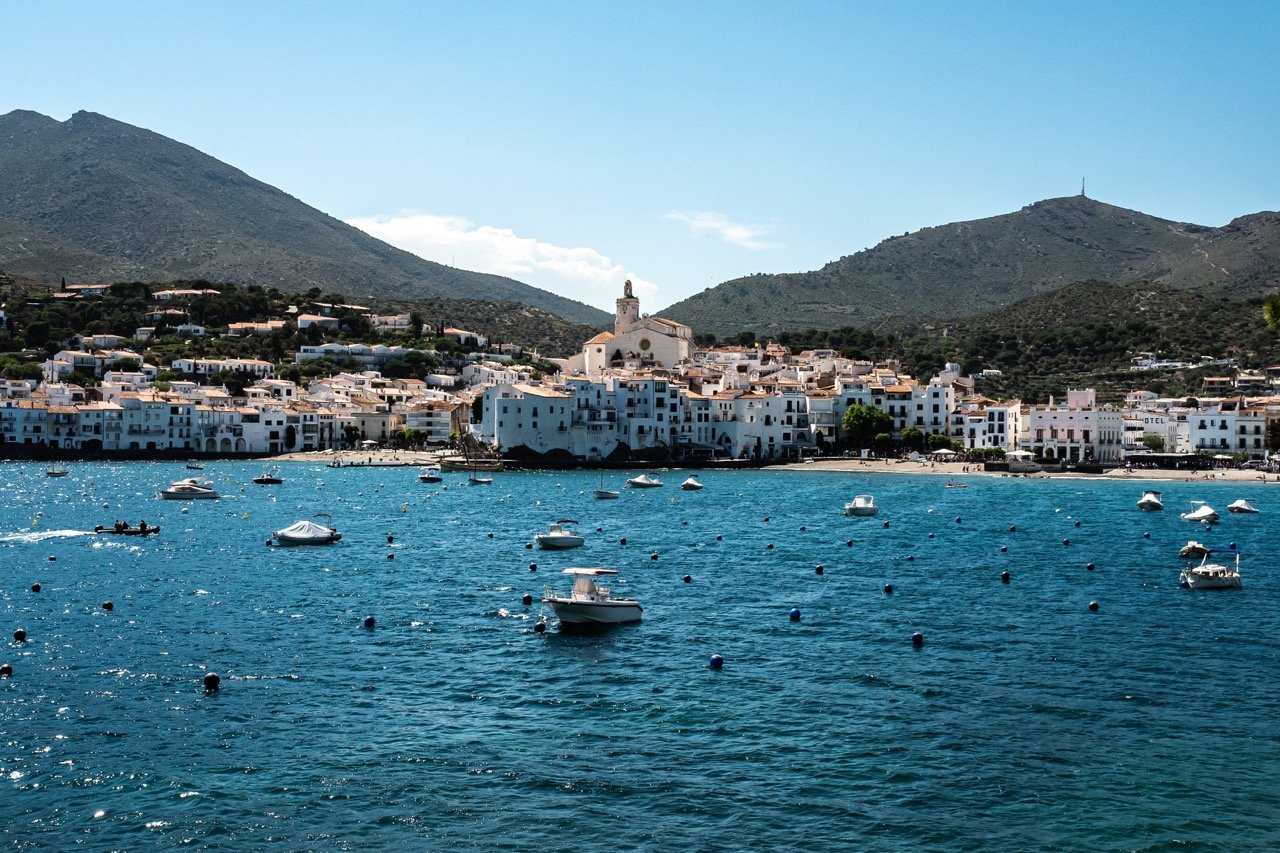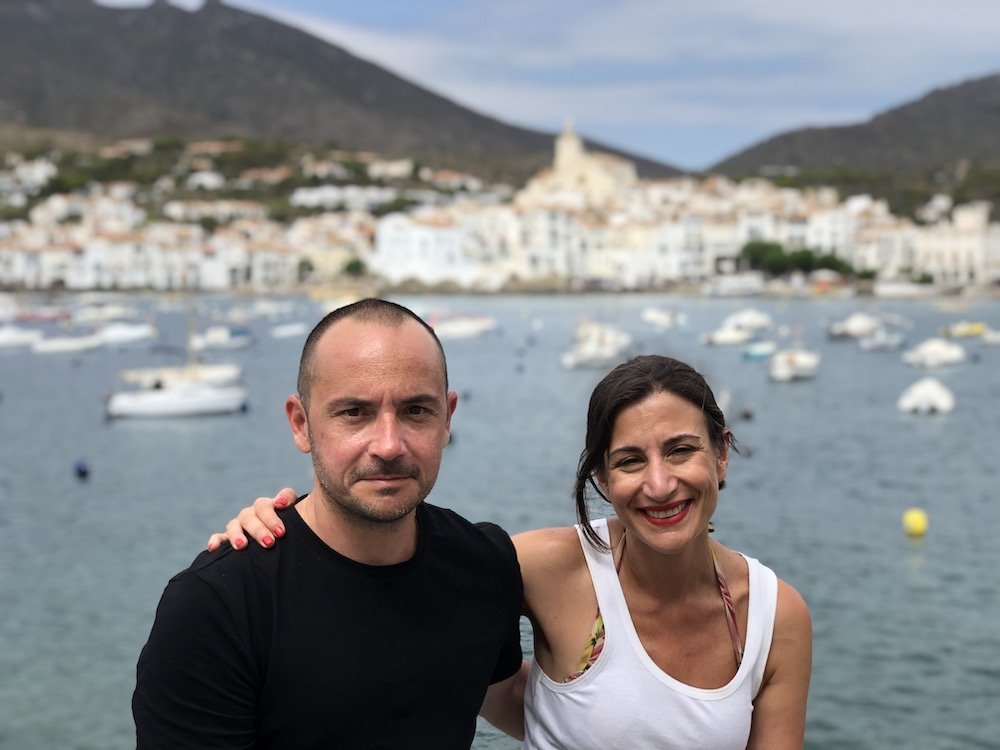Travel Guide to Oviedo, Spain - Asturias’ Underrated Capital
Affiliate disclosure: some of the links in this article are affiliate links. If you book using one of them, we’ll earn a small commission. All of our info is free to read and free of ads, so we appreciate it!
Calle de Uria in the historic center. Photo: AdelosRM, CC BY-SA 3.0, via Wikimedia Commons
Set amidst the rugged beauty of the mountains in northern Spain, Oviedo, the capital of the Asturias region, is a charming and historic city that is overlooked by most travelers. The picturesque setting is as beautiful as they come, with the peaks of the Cantabrian Mountains to the south often dusted with snow, while closer to town an abundance of green space is a big departure from the dry Mediterranean coast that you picture when thinking of Spain.
The history here is palpable – Oviedo can trace its roots back to the 9th century, and was the capital of the Kingdom of Asturias, the last resistance against the Moors as they conquered the rest of Spain.
But instead of being old and dusty, the city feels youthful and fun – a former industrial city that is now leaning into tourism and education, with a big university population contributing to a feisty nightlife and a cool restaurant and bar scene.
Oviedo is also just incredibly pretty. The city’s old town, despite having suffered during the Civil War, is one of the most beautiful in all of Spain. Add in the elegant boulevards of the new town, a proud and traditional dining scene, and a clutch of important pre-Romanesque monuments, and you’ll see why Oviedo is easy to love.
See more of our northern Spain articles:
Table of Contents
Plan your itinerary with local help
Located smack in the middle of the amazing Asturias region, there is so much you can do just beyond Oviedo’s borders.
So if you could use some help figuring out a great plan for your visit, schedule a Spain travel consultation with Luis, our Asturias-based Local Expert!
These are one-hour Zoom calls where you’ll get to chat with Luis about the trip you’re planning and he’ll share his tips and advice, answer your travel questions, and help you perfect your itinerary.
Why visit?
Santa Maria del Naranco church. Photo: Yildori, CC BY-SA 3.0 ES, via Wikimedia Commons
As a historic destination, Oviedo is hard to beat. Founded in the 9th century, this is Spain’s oldest Christian city, and it is a veritable wealth of Medieval buildings & squares in the famous old town. This part of Oviedo makes the effort to get here well worth it, thanks to its beautiful architecture, crooked lanes, and gorgeous plazas.
The pre-Romanesque churches in and around the city, listed as UNESCO sites, are also worthy of a visit. Oviedo is also a remarkably clean place – it has regularly been declared the cleanest city in Spain for several years running, and walking through the city streets is notably different to strolls through larger cities like Madrid or Barcelona.
Asturian culture is another big draw for visiting Oviedo. This mountainous region of Spain has long been overlooked by international tourists, but that is in big part to the landscapes. For a long time, the mountains made this place very hard to get to, only accessible via long and winding roads through the lofty mountains.
That isolation has led to Asturian culture developing its own unique traditions, from dress to music to dances. They also have their own language, and while not officially recognized by Spain like Catalan, Basque, or Galician, there are strong efforts to promote it locally.
All those mountains also make Oviedo a good base for hiking in the nearby hills or a stopover on your way to the Picos de Europa National Park nearby (or one of the many other Natural Parks). Oviedo is also the official starting point of the Camino Primitivo, the route of the first-ever pilgrimage to Santiago de Compostela to visit the tomb of St. James, about 12 to 14 days-walk to the west.
Finally, the gastronomy of Oviedo – and Asturias at large – is also very different from the rest of Spain. Here, mountain cuisine is king, with taverns serving up hearty platters of meat, specialty stews like fabada asturiana, and an array of over 40 different cheeses that filter down to the city from the mountain pastures.
Apple orchards nearby also mean that Oviedo is an epicenter of cider – in fact, Asturias produces far more cider than the Basques, even though it’s the latter who are famed for it. In Oviedo, the old town is home to countless historic cider taverns where you can enjoy bottles of the stuff for a very cheap price.
Where is Oviedo?
Oviedo is in Asturias, one of Spain’s 17 autonomous communities in the northwestern corner of Spain. The city is cradled by lush valleys and picturesque mountain ranges, just a short distance from the northern coast of Spain, where the Bay of Biscay meets the rugged shoreline.
There’s no mistaking that Oviedo is a mountain town – in all directions there are beautiful mountains to scale. The magnificent Cantabrian Mountain Range separates Asturias from all its neighbors, including Cantabria to the east and Castile y Leon to the south. To the west, the river Eo cuts through the mountains and acts as a natural border between Asturias and Galicia, the autonomous community that sits in the far northwest corner of the nation.
Oviedo is served by a prominent regional airport, offering direct connections to various destinations across Europe. The Spanish capital Madrid lies approximately 300 miles to the south.


How to get here
Oviedo is served by the Asturias Airport, which is about 29 miles (47 km) from the city and situated next to the city of Aviles on the coast. Buses make the journey from the airport to Oviedo, costing between €7 and €12 euros and taking about 45 minutes. Taxis are also an option, but the long distance means a high cost of over €120.
Train
Starting at the end of 2023, a new high-speed train connects Oviedo with Madrid. There are four departures a day from Madrid, which takes about 3 hours and 40 minutes to get to Oviedo. Tickets cost around €39 to €54.
Bus
Buses from the Spanish company Alsa also make the long journey from Madrid to Oviedo, with a travel time of around 5 hours and 30 minutes. There are frequent departures throughout the day from Madrid, about every 3 hours or so. Tickets cost approximately €40.
Where to buy train & bus tickets
As a general rule, I always recommend booking your transport tickets directly with the service provider. However, comparing options can be tedious and their websites aren’t always great.
Omio is an aggregator website/app that I really like. It shows options for public transport routes all over the world. When you do a search, you’ll be able to see all your options for trains, buses, flights, and even ferries along with a host of different companies that provide the services. It costs a little bit more than booking direct, but it’s easy to use and very convenient.
Renting a car
Renting a car doesn’t always make sense in Spain, but if you’re planning a road trip in the North, it definitely does. You don’t need a car to get to Oviedo, but if you want to visit the coast and gorgeous natural areas around it, then you’ll want one.
If your northern Spain road trip is not starting in Oviedo, know that you’ll find all the major international companies in Northern Spain as well as some smaller local ones which are often less expensive. Any medium-to-large city will have rental agencies, but for the best selection you’ll probably want to rent somewhere with an international airport or a busy train station.
If you plan to pick up the car in Oviedo, you’ll find most of your options at the bus station, which is essentially attached to the train station.
Where to find a car rental
To check prices and book, I recommend using DiscoverCars. It’s a car rental website includes offerings from all the major international rental companies as well as lots of smaller local agencies, which often have much better pricing. You can often find great deals.
How long to spend
To do Oviedo justice, you need only 2 days. ON your first day, you’ll be able to get your bearings around the stunning old town, sampling the local sweet treats, cheeses, specialty cuisine, and of course the cider that is overflowing from the local taverns. You’ll also have time to visit one of the excellent museums in the old town.
On day 2, you can spend your morning at the Campo de San Francisco and exploring the newer side of town before making your way up into the mountains north of town to visit the UNESCO-listed pre-Romanesque churches.
Where to stay
Eurostars Hotel de la Reconquista is surely the grandest hotel in town. Set within an 18th century hospice, the hotel has fused contemporary touches with its historic setting. Nightly rates range from $100 - 150 USD.
Hotel Soho Boutique puts you right next to the old town with nice rooms at a very attractive price. You can usually find a room for under $100 USD.

What to see & do
1. Explore the Old Town
The Old Town of Oviedo is a must-visit for any traveler. Its narrow cobblestone streets are steeped in history and lined with beautiful buildings and charming cafes. As you wander through the labyrinthine alleys, you'll encounter architectural gems such as the Gothic-style Oviedo Cathedral, which dates to the 14th century. There’s also a wealth of museums, sculptures, and secretive squares to discover.
El Fontán square. Photo: Carlos Cunha, CC BY-SA 3.0, via Wikimedia Commons
2. Venture into the Archaeological Museum of Asturias
For a dose of history and culture, head to the Archaeological Museum of Asturias. Housed in a 16th-century monastery, this museum offers a fascinating insight into the region's past. Exhibits span from prehistoric times to the Roman and Gothic periods.
3. Go hunting for sculptures
Oviedo is known for its impressive collection of public art, which can be found scattered throughout the city. Take a leisurely stroll and discover the many sculptures that grace the streets and squares. One notable sculpture in the Campo de San Francisco Park is the life-sized statue of Mafalda, a popular Argentine comic strip character.
This magnificent palace, designed in an English Tudor style with a striking octagonal tower, offers breathtaking panoramic views of the bay. While the palace itself remains private, you can still explore its meticulously maintained gardens. It's a perfect spot to relax, appreciate the scenery, and enjoy a picnic lunch.
4. Explore El Fontán Market
No visit to Oviedo is complete without experiencing the atmosphere of El Fontán Market. Located in the heart of the city, this bustling market is housed in an elegant 19th-century glass-and-iron structure.
Wander through the stalls filled with colorful displays of local produce, including cheese, cider, meat, fruits, and vegetables. Immerse yourself in the lively atmosphere as locals gather to shop, gossip, and enjoy a drink and tapas at the surrounding terraces.
El Fontán market. Photo: Carlos Cunha, CC BY-SA 3.0, via Wikimedia Commons
5. Visit Oviedo Cathedral
Oviedo Cathedral, or the Cathedral of San Salvador, is an architectural masterpiece that dominates the city's skyline. This stunning Gothic structure is adorned with intricate sculptures and boasts a rich history.
Inside, you'll find the Holy Chamber, a UNESCO-protected chapel that houses the Sudarium of Oviedo, a cloth believed to have been used to cover the face of Jesus after his crucifixion. The cathedral is a must-visit for both history buffs and architecture enthusiasts.
Oviedo’s Catedral de San Salvador. Photo: Simon Burchell, CC BY-SA 4.0, via Wikimedia Commons
6. Listen to the sound of bagpipes
Asturias has a strong musical tradition, and bagpipes, known as "gaitas," are an integral part of the region's culture. Oviedo, with its distinctive medieval atmosphere, is a strange place to suddenly hear the blare of bagpipes, but they are almost always accompanied by a traditional dance, so if you hear some bagpipes make sure to make a beeline for the noise. The entire thing adds a unique ambiance to the city that is unlike anywhere else in Spain.

Our local expert Luis has answers!
Stop wasting time and connect with Luis for the best local advice and expert help planning a better trip!
7. Discover Oviedo's UNESCO Pre-Romanesque Churches
Oviedo is home to several UNESCO World Heritage-listed Pre-Romanesque churches, which are architectural marvels. These churches date back to the 9th and 10th centuries and showcase a distinctive architectural style characterized by simple yet elegant designs.
In the city is the Church of San Julián de los Prados, while on the slopes of Mount Naranco you’ll be able to fine the Churches of Santa María del Naranco and San Miguel de Lillo.
Santa Maria del Naranco Church. Photo: GerarAS, Public domain, via Wikimedia Commons
8. Try some typical Asturian food
Asturias is renowned for its delectable cuisine, and Oviedo is the perfect place to indulge in the region's culinary delights. Try the famous Asturian dish, fabada asturiana, a hearty bean stew made with various meats, including chorizo and morcilla (blood sausage). The other must-try dish is the cachopo, a breaded and fried veal steak stuffed with ham and cheese.
9. Sample local sweets
Asturias is also known for its sweet treats. Don't miss the opportunity to try carbayones, a traditional pastry made with almond cream, or moscovitas, delicate chocolate-covered cookies filled with hazelnut praline. Oviedo is also a cheese lover's paradise, with a wide variety of artisanal cheeses to choose from.
Visit a local cheese shop and taste the region's famous cheeses, such as Cabrales, Gamonedo, and Afuega'l Pitu. These cheeses are known for their distinct flavors and textures, making them a must-try for any food enthusiast.
10. Drink cider
Cider, or sidra in Spanish, holds a special place in Asturian culture. Experience the unique tradition of pouring cider by visiting one of the many sidrerías in Oviedo. Calle Gascona (known as "the Boulevard of Cider" in English) is lined with cider bars where you can drink and dine, witnessing the age-old method of pouring cider from high above into a glass tilted at a 45-degree angle, the height helping to aerate the drink and better bring out its flavors and aromas.
11. Explore the Campo de San Francisco Park
In the center of Oviedo is the fantastic Campo de San Francisco Park, a leafy and green escape from the city streets. It’s the ideal spot for a leisurely stroll, and a favorite with locals for their pre-dinner walk or to meet with friends.
There are ice cream trucks on the boulevard that faces the old town, while inside, paths meander through flower gardens, past monuments and sculptures, and underneath towering trees.
How to spend 2 days in Oviedo
Day 1
In the morning, make a beeline straight for Oviedo’s old town, where you can spend a few hours wandering the streets and major squares. A must-see is the Oviedo Cathedral, where you should pop inside to admire the interior. Then, make your way across the old town to the Mercado El Fontán, a busy hub of stalls selling excellent local produce.
In the afternoon, the area surrounding the market is also one of the favorite places of locals to enjoy some tapas. Plaza del Fontán is a good spot for lunch – try Casa Ramón or Casa Amparo, both offering excellent fabada stews. Then, stop by the Church of San Isidoro el Real and the town hall in Plaza de la Constitucion, another central square in the old town. Afterward, take your pick between the city’s two premier museums: either the Asturian Museo de Bellas Artes or the Archeology Museum of Asturias.
Once you’re ready for dinner, a meal at one of the city’s famous cider houses is a must while in town. Head to El Bulevar de la Sidra (the Cider Boulevard) where people spill out onto the streets from the cider houses. Tierra Astur is a fantastic option, with huge platters of meat and grilled vegetables to enjoy alongside the sparkling and sweet cider.
Day 2
Ease into your second day in Oviedo with a morning stroll around the beautiful Campo de San Francisco, a leafy park in the middle of the city. There are statues inside, some monuments, and plenty of lawn space to sit down and enjoy the relaxing vibes. Then head into the newer part of the city center, with some nice shopping streets leading you to the Basilica de San Juan el Real, a stunningly ornate church.
This afternoon, make your way out to the northwest outskirts of the city, where the city turns into verdant hills and the slopes of Mount Naranco. On these slopes is where you’ll find several incredibly well-preserved pre-Romanesque churches. To walk here takes about 45 minutes, otherwise you can take a taxi. While access to the interiors of the churches requires a guide, the intricate facades and exterior details offer ample opportunity for exploration.
Back in town for the evening, it’s time to make your way to another of Oviedo’s famous restaurants. La Corte de Pelayo. One the most well-regarded restaurants in the city, it’s an ideal choice to try the Asturian cachopo.



Luis Fernández
Spain Expert based in Gijón
¡Hola y buenos días! 👋
Hi, I'm Luis, and I've been a travel consultant here in Spain for the last 11 years. If you're looking for some local advice on your trip, I'd love to help!
Learn more Book a consultation
Connect with Luis





















